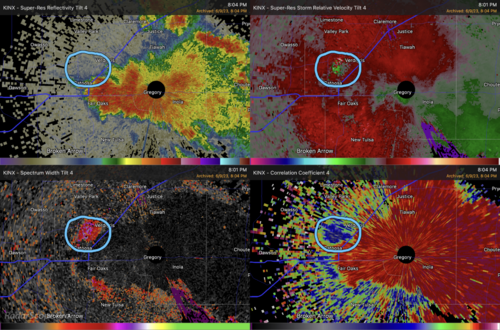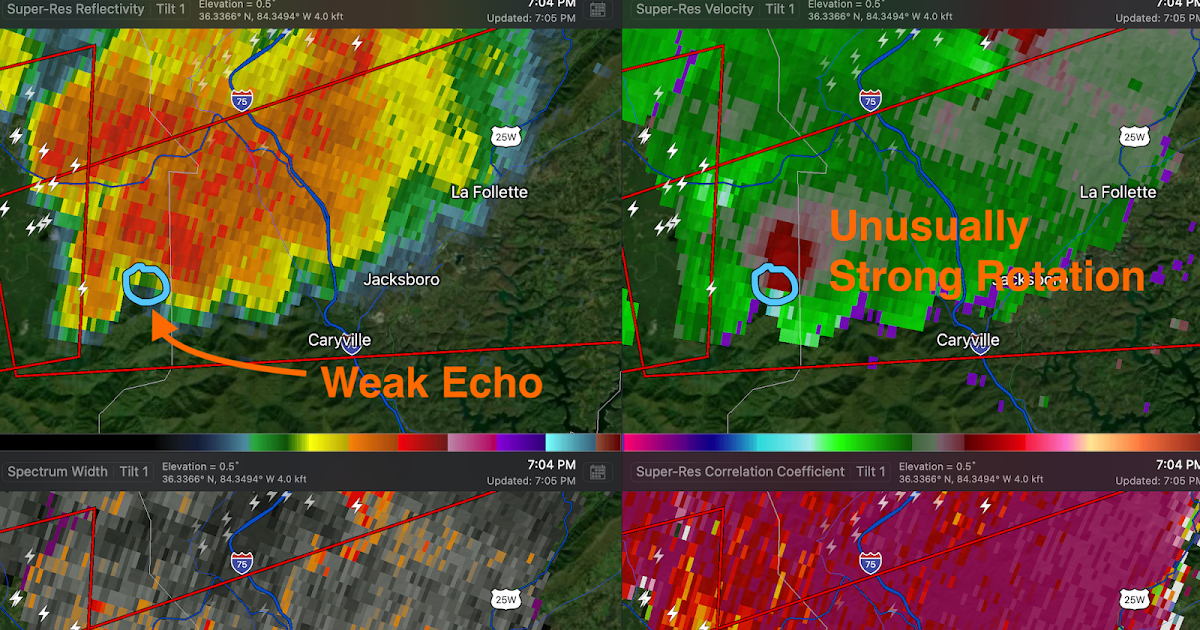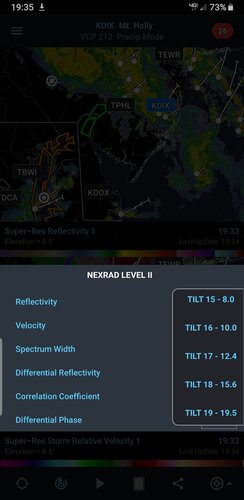gdlewen
EF2
On June 9, 2023 at 8PM CST the Tulsa radar sampled a cell very close to the radar site (about 9 miles distant). The four-panel display below shows what looks like a velocity couplet (albeit very noisy) distinctly separate from the higher reflectivity portion of the storm. At this distance, the beam is only at an elevation of about 1600 feet, but RadarScope only offers the bottom 4 elevations, so I can't check to see what is going on at higher elevations.
My first thought was, "Sidelobe contamination", but given that the distance to the radar is only about 9 miles, I wonder how much "contamination" is possible from the sidelobes, which should still be very close to the main beam at this distance. And if it is contamination, can we assume the sidelobe is sampling a region of rotation above the 4th elevation offered by RadarScope?
Any thoughts?

My first thought was, "Sidelobe contamination", but given that the distance to the radar is only about 9 miles, I wonder how much "contamination" is possible from the sidelobes, which should still be very close to the main beam at this distance. And if it is contamination, can we assume the sidelobe is sampling a region of rotation above the 4th elevation offered by RadarScope?
Any thoughts?




